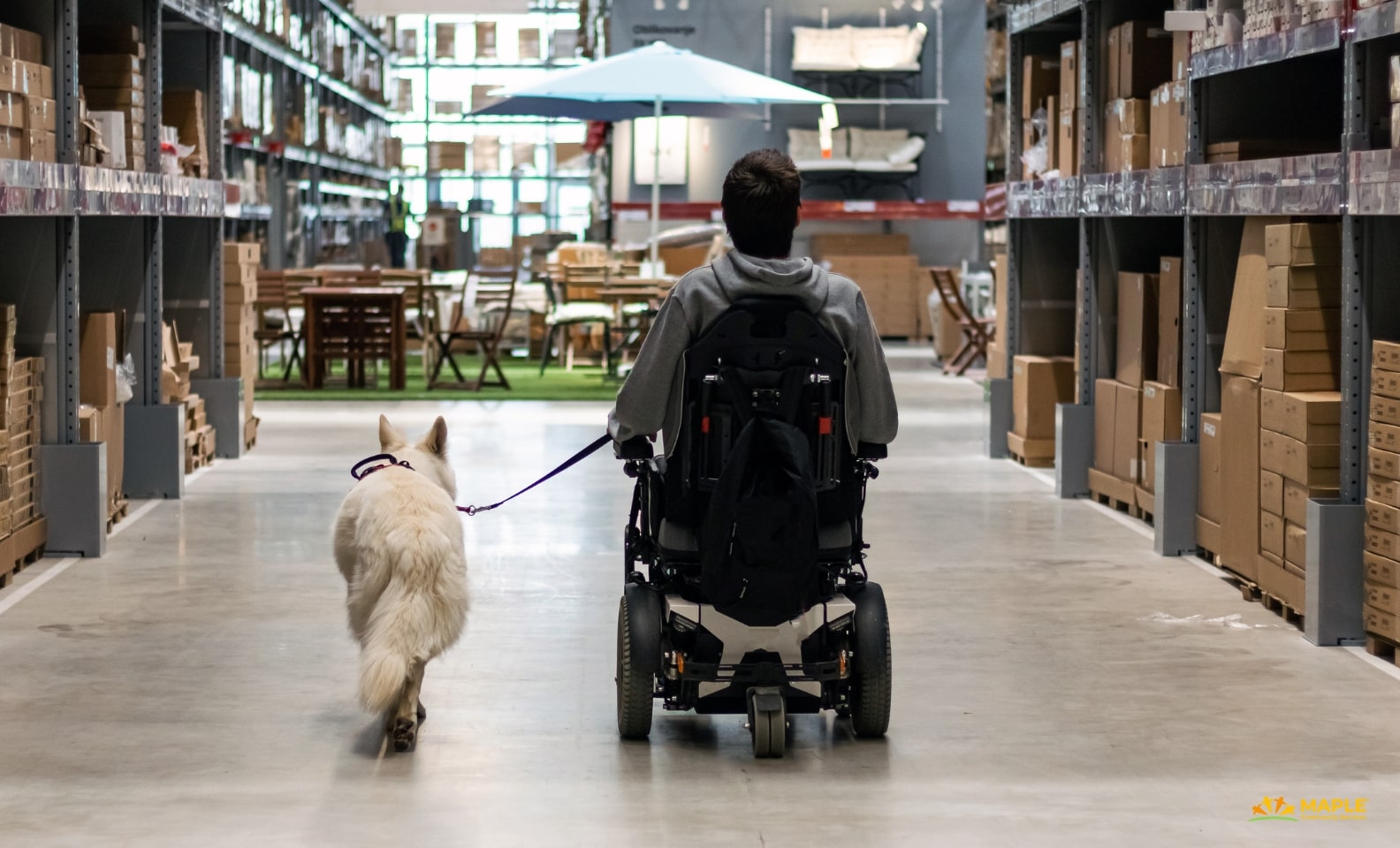NDIS Assistance for animal / pets
When it comes to living with a disability, the bond between humans and animals can be incredibly powerful. For many, animals offer more than just companionship—they provide essential support that can enhance independence, improve mental well-being, and enrich daily life.
The National Disability Insurance Scheme (NDIS) in Australia can help fund certain types of animal-related disability support. Whether it’s assistance animals trained to perform specific tasks or therapeutic programs involving animals, the NDIS recognises the vital role these therapy animals can play in helping participants reach their goals.
If you or a loved one living with a disability are thinking about welcoming a new furry companion, it’s worth exploring the NDIS funding available for assistance animals. Understanding the support you can receive and the steps to apply can make a significant difference in ensuring that your new companion meets your needs.
Can the NDIS fund pets and animals?
The National Disability Insurance Scheme (NDIS) does not generally fund assistance animals or pets, as they are typically considered a personal responsibility rather than a disability related support. However, there are some exceptions where NDIS funding may be available for animals specifically trained to provide disability related support.
For example:
- NDIS assistance animals – The NDIS may fund the training and maintenance of assistance animals, such as guide dogs or service dogs, that are specifically trained to help a person with disability support needs. These animals must be recognised as essential for helping a participant to achieve their goals, such as increasing independence or improving mobility.
- Therapeutic support – In some cases, NDIS might fund animal-assisted therapy if it is deemed a reasonable and necessary support for the participant’s disability. This could include sessions with therapy animals that are part of a structured therapeutic program.
How do you qualify for an NDIS assistance animal in Australia?
Qualifying for an NDIS assistance animal requires demonstrating that your animal is reasonable and necessary support directly related to your disability. Here’s how the process generally works:
Needs assessment
The first step is to have a comprehensive assessment by a qualified health professional, such as a psychologist, occupational therapist, or GP. This assessment should determine that an assistance animal is essential to help you achieve your goals, manage your disability, or improve your independence and quality of life.
Evidence and documentation
You will need to provide enough evidence that an assistance animal is necessary. This includes documentation from your health professional that outlines how the assistance animal will support your specific needs, what tasks the animal will perform, and how these tasks relate to your disability. The evidence should also show that the assistance animal is the most effective and beneficial form of support compared to other available options.
NDIS plan and goals
Your NDIS plan must include goals that the assistance animal would help you achieve. For instance, if one of your goals is to increase independence at home, the assistance animal might be trained to help with tasks like opening doors, retrieving items, or providing physical stability. The animal’s role should be clearly linked to these goals in your NDIS plan.
Training and accreditation
Your assistance animal must be trained by an accredited organisation to perform specific tasks related to your disability. The NDIS is more likely to fund animals that have been professionally trained to meet the required standards of behaviour and task performance. The organisation that trains the animal should provide certification of the animal’s capabilities.
Cost and funding request
You will need to submit a detailed request to the National Disability Insurance Agency (NDIA) for funding, including the training costs, maintenance support, and other things associated with acquiring your assistance animal. This request should include a breakdown of all costs, such as veterinary care, food, and insurance, to show how the funding will be used.
Review by NDIS
Once all the documentation and evidence are submitted, the National Disability Insurance Agency will review your request to determine if the assistance animal is a reasonable and necessary support. They will consider whether the animal meets the funding criteria and whether it is the best option for achieving your goals.
Approval and ongoing support
If the NDIS approves your request, the funding will be included in your NDIS plan. The NDIS may also provide ongoing support for the maintenance and care of the assistance animal, ensuring that it continues to meet your needs over time.
Be sure to work closely with your health professionals and NDIS planner throughout this process to ensure that all necessary documentation and evidence are in place to support your request.
What is the difference between an assistance animal and an emotional support animal in Australia?
In Australia, the key difference between an assistance animal and an emotional support animal (ESA) lies in their roles, training and legal recognition. Here’s a breakdown of these differences:
Assistance animal
- Purpose – An assistance animal is fully trained to perform tasks that directly assist a person with a disability. These tasks are usually related to managing physical, sensory, psychiatric, or intellectual disabilities. For example, guide dogs for the visually impaired, hearing dogs for hearing impaired, or service dogs for people with mobility issues are all types of assistance animals.
- Training – Assistance animals undergo specialised training to perform specific tasks that mitigate the effects of a person’s disability, They are trained to high standards of behaviour and task performance, often through accredited programs.
- Legal recognition – Under Australian law, assistance animals are legally recognised and have rights similar to those of their handlers. This means they are allowed to access public places, including restaurants, shopping centres, public transport, and workplaces, where pets are typically not permitted. The legal protection is outlined in the Disability Discrimination Act 1992 (DDA), which ensures that people with disabilities can be accompanied by their assistance animals in most public settings.
- NDIS support – Assistance animals can be funded by the NDIS if they are considered a reasonable and necessary support to help a participant to reach their goals and manage their disability.
Emotional support animal (ESA)
- Purpose – An emotional support animal provides comfort and companionship to a person with a mental health condition or emotional disorder. Unlike assistance animals, ESA’s are not trained to perform specific tasks related to a disability; their primary role is to offer emotional support and alleviate symptoms like anxiety or depression through their presence.
- Training – ESA’s do not require specialised training beyond basic obedience. They are not trained to perform tasks, but rather to provide general comfort.
- Legal recognition – In Australia, emotional support animals do not have the same legal rights as assistance animals. They are not granted access to public places where pets are not typically allowed. The legal framework for ESA’s is less defined, and they are not protected under the Disability Discrimination Act in the same way assistance animals are.
- NDIS support – The NDIS generally does not fund emotional support animals, as they are not considered a reasonable and necessary support related to a specific disability. However, the NDIS may fund therapeutic interventions involving animals, like animal-assisted therapy, if they are part of a structured and evidence-based treatment plan.
Bringing a companion animal into your life can be a transformative experience, especially when that animal is trained to support your specific needs and help you with community involvement. If you’re ready to take the next step, reach out to our qualified and attentive team today for further information or to discuss how an assistance animal might fit into your plan.



